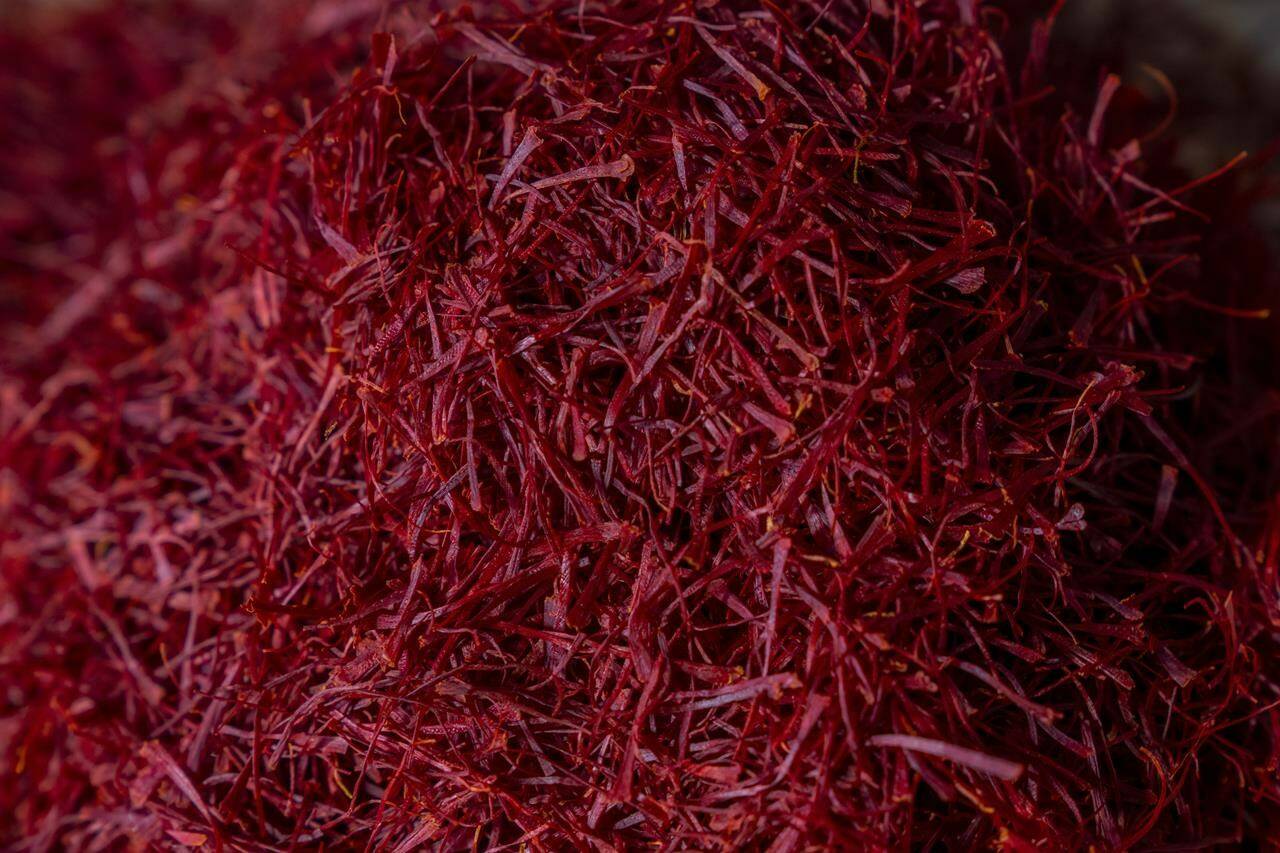When Matthew Roy moved from New Hampshire in 2020 to start a farm in southwestern Nova Scotia, one of the new crops he zeroed in on was saffron.
A spice so expensive that it has been dubbed red gold, saffron is traditionally grown in Iran, India, Afghanistan, Spain and a handful of other countries.
“We decided that we would bring two new crops to Nova Scotia, specifically because of the changing climate,” Roy said recently from his four-year-old Coastal Grove Farm in Upper Port La Tour, N.S. (The other new crop was tea.)
“We knew that it is going to be getting warmer here,” he said.
Roy said the saffron gamble paid off with yields that surprised him. In 2021, he harvested 172 grams of the prized spice, and in 2022 it rose to 342 grams. He said extreme rainfall last summer and fall hurt the yield, which fell to 66 grams. On the Coastal Grove website, a one-gram container of certified organic Nova Scotian saffron sells for $49.99.
READ MORE: Abbotsford saffron farm suffers major flood losses, but crop is in renewal
Margaret Skinner, a research professor at the University of Vermont, studies the plant and has been working with Roy on his farm, which also grows vegetables and herbs. While warming temperatures make Nova Scotia more hospitable for saffron, other climate effects such as drought and flooding could be harmful.
“It’s not just ‘Oh, it’s warmer in the winter or hotter or drier or wetter in the summer,’” Skinner said. “It’s more that we’re having extreme weather events. When we have a drought, it is really dry for a long time. When it gets hot, it gets really hot for us. When it rains, it is often a deluge.”
Navin Ramankutty, Canada Research Chair in data science for sustainable global food systems at the University of British Columbia, agreed with Skinner.
He highlighted similar problems in Canada, especially the recent heat dome and floods that affected British Columbia over the past couple of years.
“Farmers are adapting to that change,” he said. “Maybe the crops that we currently grow in these places, we can’t keep growing them. Maybe farmers will switch to growing different crops, crops that are more suited to warmer climates.”
A 2022 study published in the Canadian Journal of Plant Science found that the cultivation of saffron in cold climates faces challenges because low soil temperatures hinder flowering, but it said the right farming techniques could improve results.
“Although there are indications that saffron yield is higher in climate with warm summers, rain in autumn and cool winters, typical of the Mediterranean basin, saffron production in the colder climate of Quebec, Canada, and adjacent New England has been ongoing for the past five to 10 years,” it said.
Usually harvested from mid-October to mid-November, the purple crocus flowers are picked by hand. The petals are separated — also by hand — and the three tiny, delicate stigmas are carefully isolated, then dried in the sun, becoming one of the world’s most expensive and sought-after spices.
Saffron is used in products including food, medicine and cosmetics. A kilogram requires the stigmas of about 150,000 flowers and sells for up to $6,000.
Bashir Ahmad Allie, head of advanced research for saffron and seed spices at Sher-e-Kashmir University of Agricultural Sciences and Technology, is not surprised that parts of Canada are able to cultivate the sensitive spice, considering how climate is changing across the globe.
He said he would like to collaborate with farmers here to understand how climate change is affecting the area and saffron growth. In Canada, the spice is now grown in parts of Nova Scotia, Quebec, Ontario and British Columbia.
While saffron farming in Jammu and Kashmir is handed down from one generation to the next, climate change is turning some of the young people away, Allie said. The warming and unpredictable temperatures cause farmers to spend more time, money and effort with no guarantee of yield, he noted.
In the 1990s, Allie said the region saw a “uniform pattern” of rain from May to October, but over the past few years has seen unseasonal snow, hail, floods and drought.
“Climate change is a reality. It is creating havoc for saffron,” he said. “And that shocks us.”
— With files from The Associated Press
Hina Alam, The Canadian Press
READ MORE: Climate changing what’s growing on Canadian farms, eaten on Canadian tables

